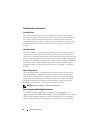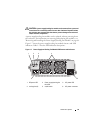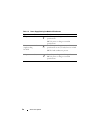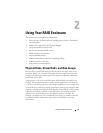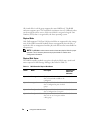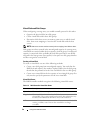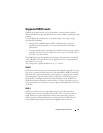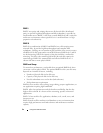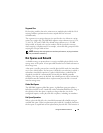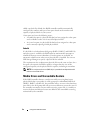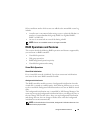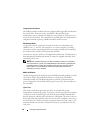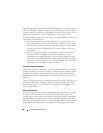
Using Your RAID Enclosure 31
Supported RAID Levels
RAID levels determine the way in which data is written to physical disks.
Different RAID levels provide different levels of accessibility, redundancy, and
capacity.
Using multiple physical disks has several advantages over using a single
physical disk, including:
• Placing data on multiple physical disks, called
striping
, means that
input/output (I/O) operations can occur simultaneously and improve
performance.
• Storing redundant data on multiple physical disks using
mirroring
or
parity
supports reconstruction of lost data if an error occurs, even if that error is
the failure of a physical disk.
Each RAID level provides different performance and protection. You should
select a RAID level based on the type of application, access, fault tolerance,
and data you are storing.
The storage array supports RAID levels 0, 1, 5, and 10.
RAID 0
RAID 0 uses disk striping to provide high data throughput, especially for large
files in an environment that requires no data redundancy. RAID 0 breaks the
data down into segments and writes each segment to a separate physical disk.
I/O performance is greatly improved by spreading the I/O load across many
physical disks. Although it offers the best performance of any RAID level,
RAID 0 lacks data redundancy (fault tolerance). Choose this option only for
non-critical data, because failure of just one physical disk will result in the loss
of all data.
RAID 1
RAID 1 uses disk mirroring so that data written to one physical disk is
simultaneously written to another physical disk. This is recommended for
small databases or other applications that do not require large capacity.
RAID 1 provides full data redundancy, meaning that if one disk fails, the
mirrored disk automatically maintains throughput with no data loss.




